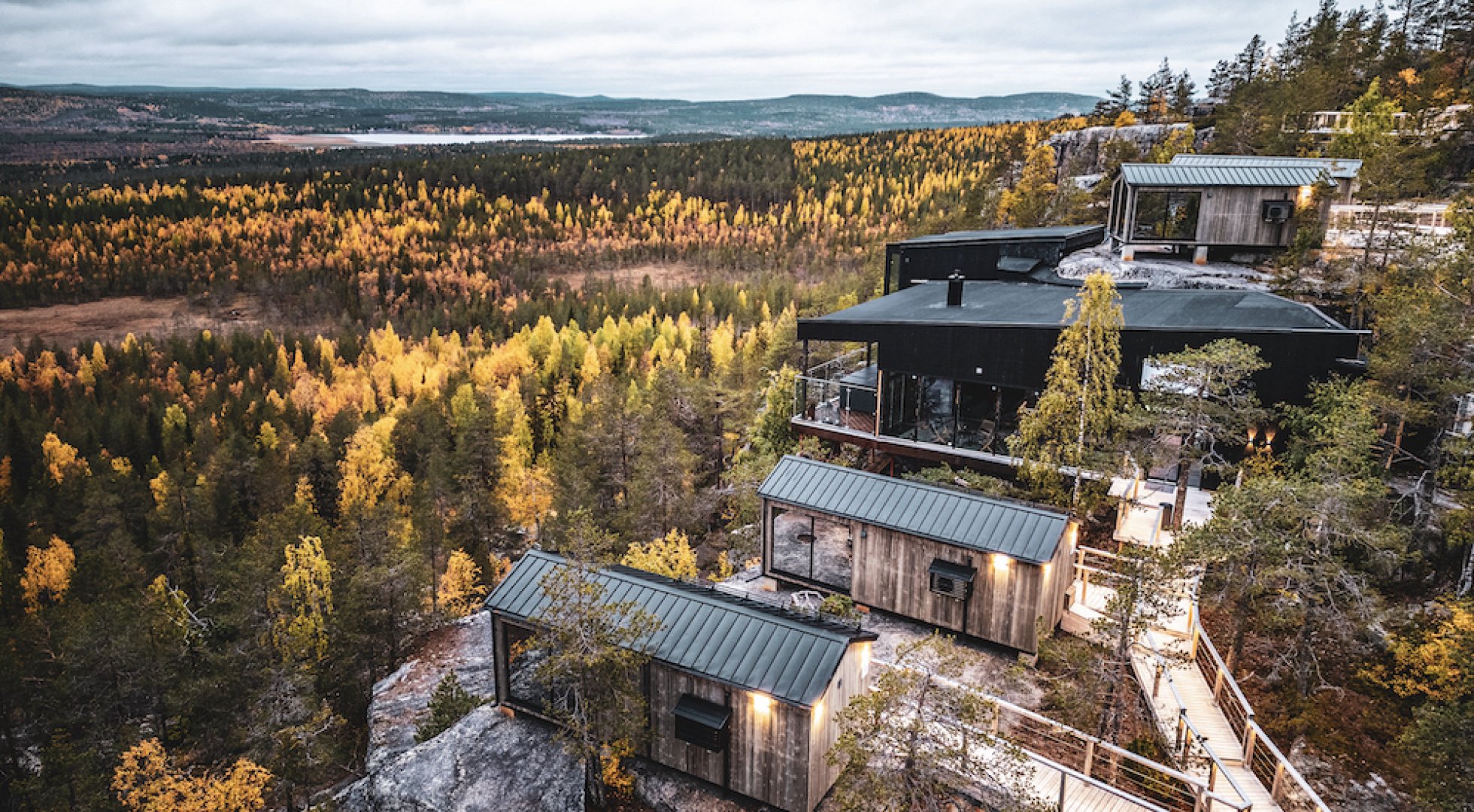
The hospitality industry is sometimes criticised for its negative contribution to the environment and sustainability. But the hospitality industry, when done right, has every opportunity to be a regenerative force for the place it serves. In a number of articles, Swedish Lapland Visitors Board wants to highlight some of the initiatives taken by the industry in the pursuit of enhanced social, economic and environmental sustainability.
It is 18 degrees below zero in Kiruna and a persistent westerly wind is blowing. Frida and Dennis Lind, siblings and owners of Camp Ripan, brush off the snow as they enter. I ask them about the company’s efforts related to sustainability issues. Frida says:
– Where it comes from? I actually think it’s a simple as us really liking this place. We like Kiruna.
Dennis adds:
– When we took over Ripan, in 2002, hardly anyone talked about sustainability. It wasn’t a buzzword in the industry. But looking back at how we’ve been working it’s easy to see that sustainability is part of how we’ve gone about things all along.
– Even if we didn’t understand it at the time, says Frida.
It is interesting to follow the conversation between Frida and Dennis. They talk over each other, yet somehow manage not to interrupt the other. They finish each other’s sentences and constantly carry the conversation forward. When Dennis says at some point that it has also been hard work sometimes, but that the two of them – as siblings – have never found it difficult to work together, it seems like an understatement.
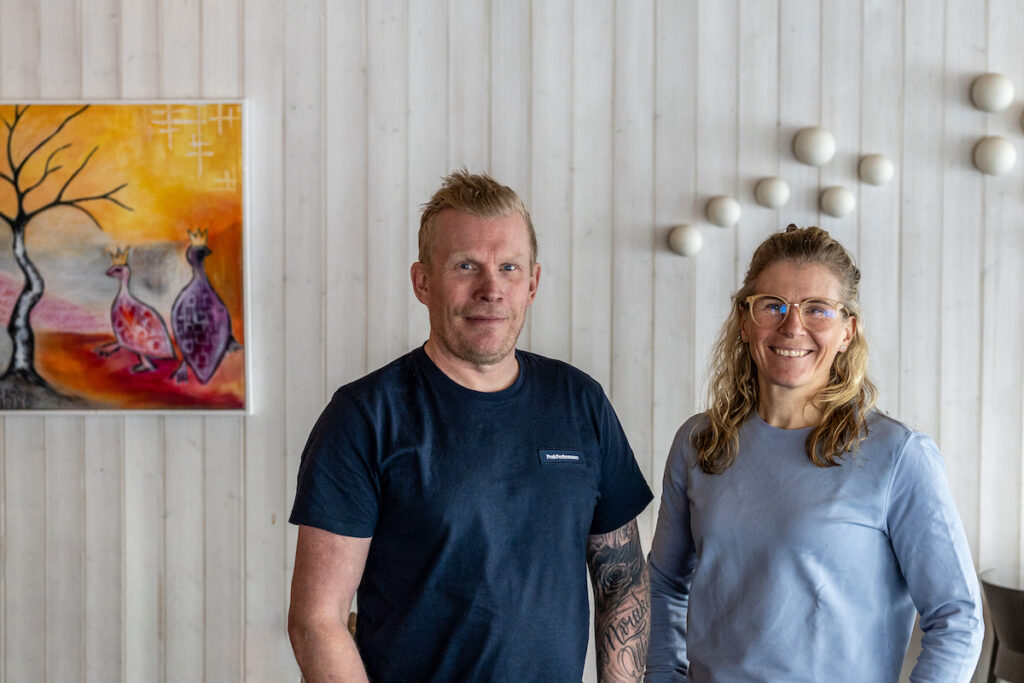
Camp Ripan is a family business. The Lind family took over in 2002: mum and dad and their children Frida and Dennis. A few years later the family realised that to get the business really going, they had to invest in the winter season, too.
– Icehotel had already embarked on an exciting journey. We wanted to offer something in central Kiruna and increase the number of winter options available.
– Working on our new design plan for 2005 it was all about Kiruna. Our brand promise became: “We give you Kiruna”. To us it meant digging where you stand and working with Kiruna’s three cultures: the Sami, the settlers and the Tornedalians.
– Throughout the process it was a given that we’d use local material and local companies when we renovated. We wanted to be at the place. Because this place means something to us. It’s our home.
The first years after the family had taken over the business, seven people worked here. This season’s payroll has 110 names on it. If Camp Ripan had been a sawmill the headlines in the local papers would have been “Camp Ripan’s new facility provides 100 new job opportunities”. But since this is the hospitality industry you rarely get to read that kind of headlines.
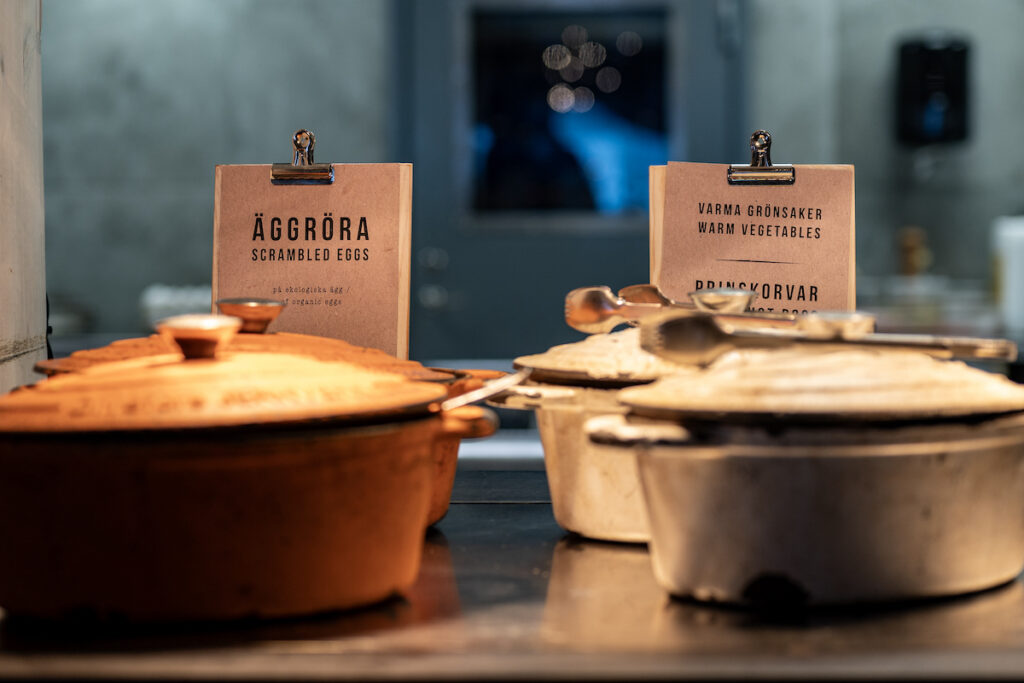
There are many examples of Camp Ripan’s sustainability philosophy. Left-over coffee grounds are reused as face masks in the award-winning spa facility. It is just a small thing, but it is still there, built into the recycling philosophy. More importantly – from an environmental point of view – was that when the kitchen at Ripan was rebuilt, they decided to make it as energy-efficient and environmentally conscious as possible.
– When the kitchen was new, it was Sweden’s most energy-efficient restaurant kitchen. But now, since development is ongoing, it’s possible that someone has built an even more efficient kitchen, says Dennis.
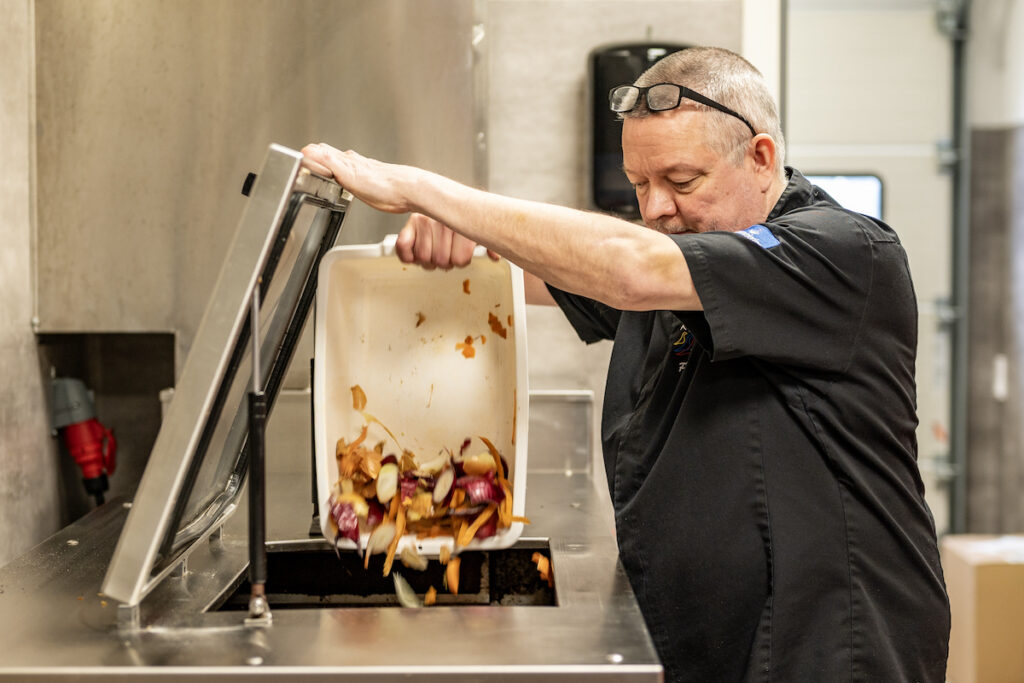
Another thing that was installed in the kitchen was ‘Nasse’, a composting machine that turns food waste into fertiliser in just 24 hours. In the beginning they were unsure how to use all this fertiliser. But nowadays a topsoil producer comes here to pick up Nasse’s work. Visitors’ food waste becomes energy for the lawns of new Kiruna.
– At the same time, the key issue has been to reduce waste. We measure everything that goes into Nasse. We want to keep reducing it. Today we have a full-time employee who manages all the climate-related and environmental work, Frida elaborates.
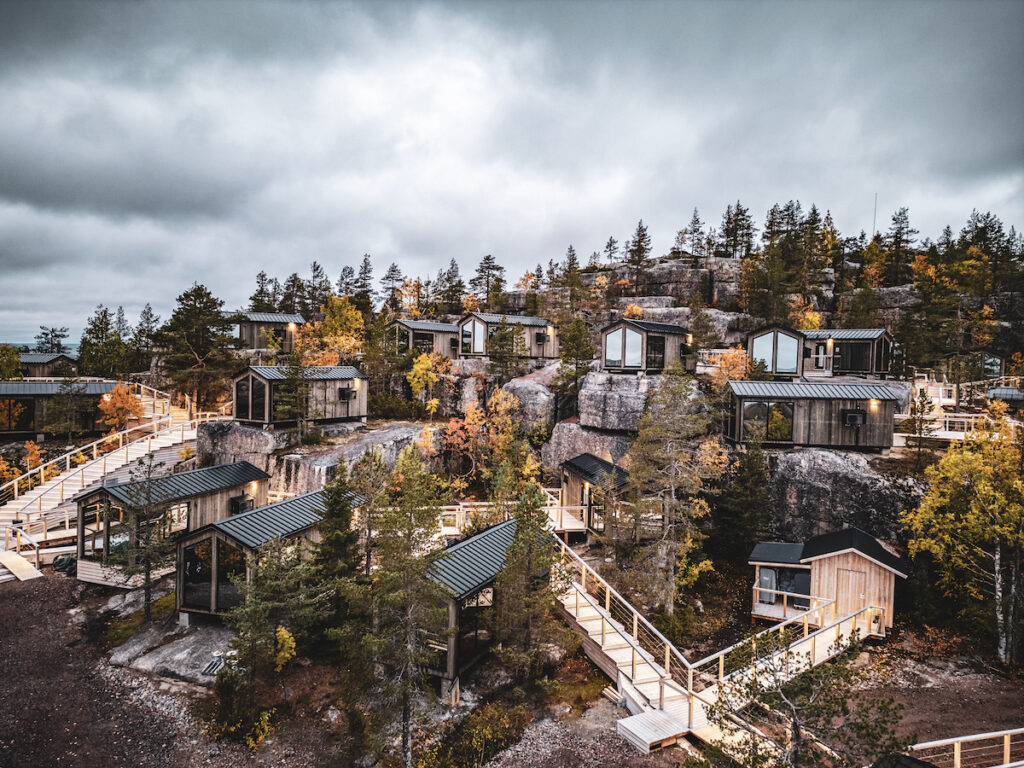
On top of the mountain Luppioberget, just outside Övertorneå, Explore the North built a new hotel facility in 2019. There had been a summer café there earlier, but now they were building a larger facility with a restaurant, spa, and hotel rooms.
– We built 40 cabins. Since Luppioberget is very barren we really wanted to be careful with the trees that grow here. I have to say I’m very proud that we only needed to cut down 13 trees to put the cabins up, says Johan Väisänen.
Sara and Johan Väisänen are the owners of Explore the North, a group that has placed the Torne Valley culture and nature on the world map with several facilities in the area.
– But it’s not just that we didn’t cut trees down. The entire build is constructed so it can be removed, leaving Luppioberget almost intact.
– Water pipes, sewage pipes and electricity are placed on the ground under the platforms you walk on. It’s a bit like how they build in Greenland. Instead of ruining the ground by digging in it, we placed it all above ground.
– And the hotel cabins are placed on plinths that you can remove as well, without damaging the ground.
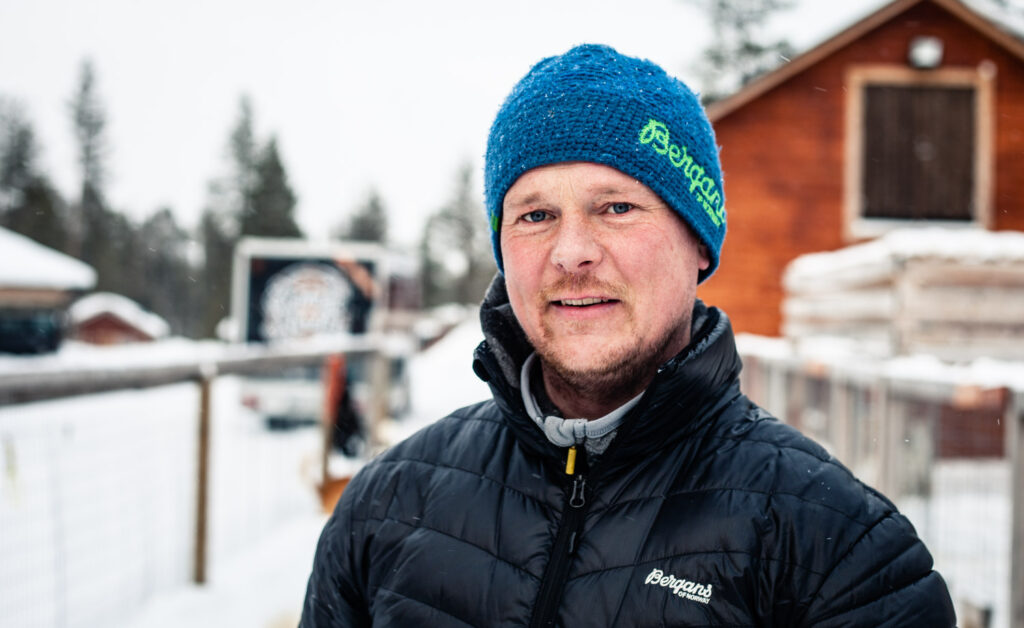
Ever since 2005, when Explore the North was founded, sustainability and an environmental footprint that is as small as possible have been essential to Sara and Johan. To fill the hotels, maximising the logistics, has been a given to keep the footprint small. The group takes care of its own recycling, through a local company, instead of transporting things. The company has a clear well-being policy for its staff and the purchase strategy is as simple as “The nearer and the more local, the better”.
– When we built the first lodge in Särkimukka the bank told us we could only get a mortgage if the lodge was built in a way that meant it could be moved, says Johan laughing.
– It was difficult to make the bank believe that we could succeed. Now we’re in a different situation, but it’s still great to build so it can be moved, saving trees and really think about minimising the footprint while benefitting the area.
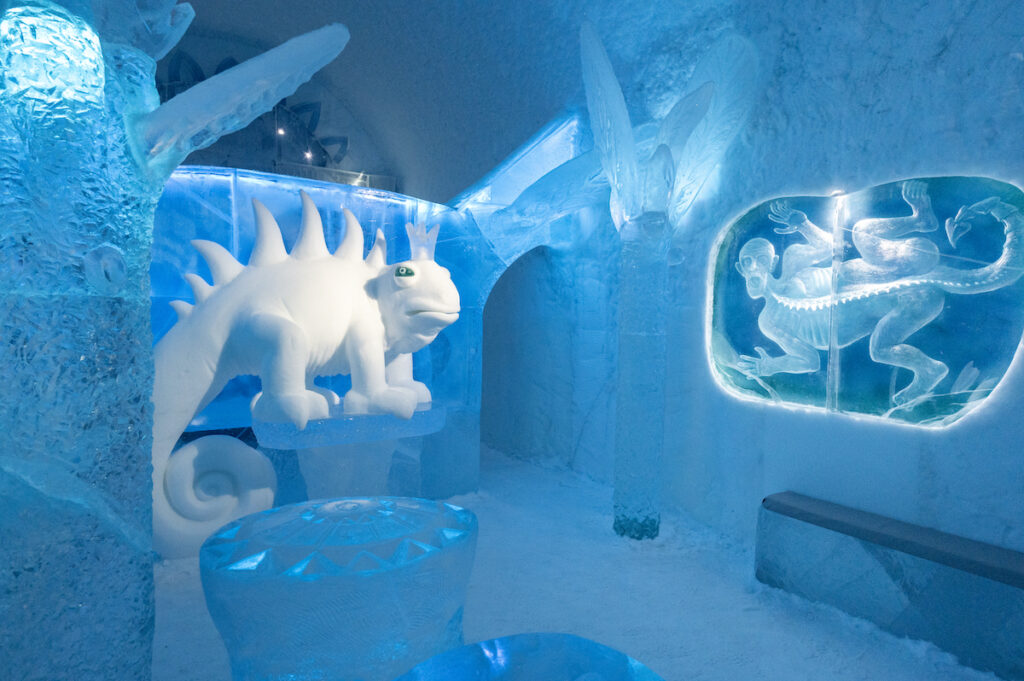
Other exciting examples of hotel buildings and environmental work, but in very contrasting ways, are Icehotel in Jukkasjärvi and Hotell Kust in Piteå. When the idea of Icehotel was born nearly 35 years ago, it was an idea sprung from the very ground where its founder Yngve Bergkvist stood. Thanks to Jukkasjärvi’s cold, and using ice blocks from the frozen water of the Torne River, the world’s first ice hotel was built. Even if there are other ice hotels in other countries now, Jukkasjärvi is still the origin, and Icehotel the original. It is difficult to be more sustainable than a hotel that recycles itself from one year to the next. The ice blocks, taken from the Torne River, melt in spring and flow back to the river. When Icehotel in Jukkasjärvi decided to become a hotel for 365 days of the year, it was only natural that solar power would cool the building during the warmer months.
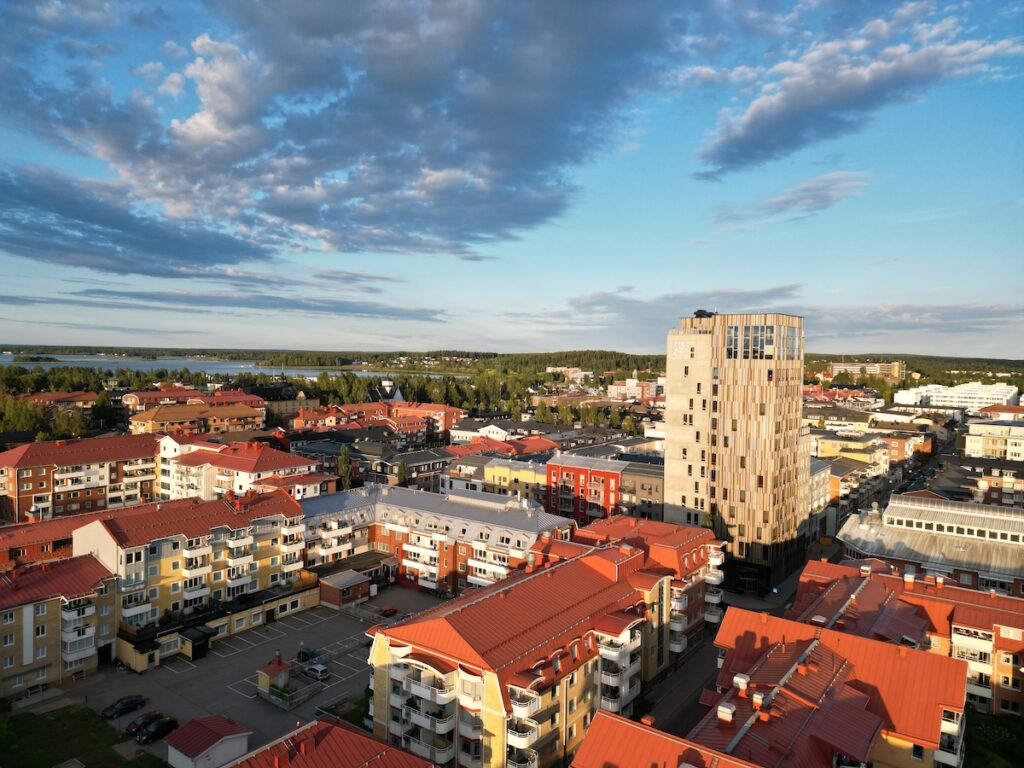
Technical solutions have helped the environmental ambitions of Kust Hotell & Spa in Piteå as well. When the hotel was built, the façade was clad in a material that collects and purifies the town’s emissions. The entire hotel works like a small forest, or a city lung.
Thinking about the environment, about being part of the solution and not the problem, can be expressed in a variety of ways. Everything from digging where you are standing, using local ice, to technical innovations like a functional façade or a super compost. It could also be coming up with a new product using left-over coffee grounds, or simply to go fishing in the ways of old, serving the catch in the restaurant 70 metres from the fishing spot. The most important thing is not what you do, but that you do it. Becoming a part of what makes the place prosper. This becomes clear when we meet these entrepreneurs and many others. Or, as Dennis said about Ripan building Sweden’s most energy-efficient kitchen: “We were the best then. Someone has made it a bit better now, for sure.”
Development should never stop.
Do you want do read the first part in this series of articles were we highlight some of the initiatives taken by the industry in the pursuit of enhanced social, economic and environmental sustainability? Click right here.
Care for the Arctic — it’s our home is a joint Arctic agenda with a toolbox for the Arctic destination’s main stakeholders, that address the challenges that we face together – locally, and globally, socially, economically, and environmentally. Read more about it here.